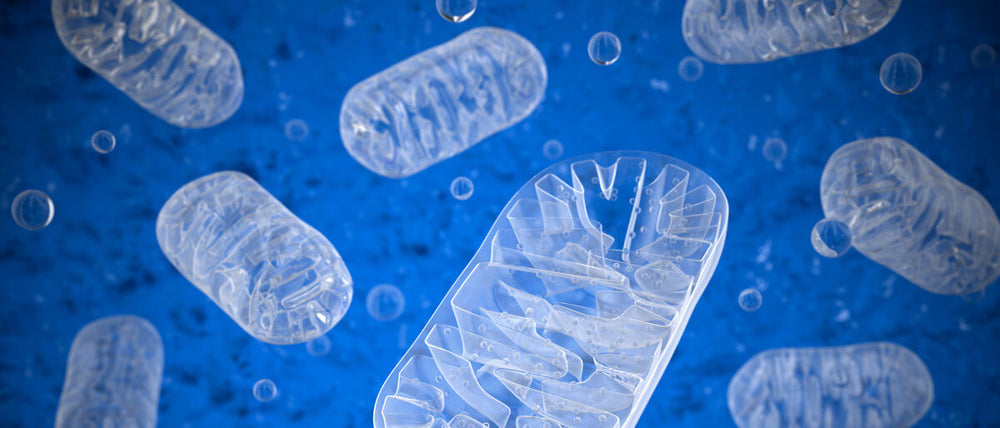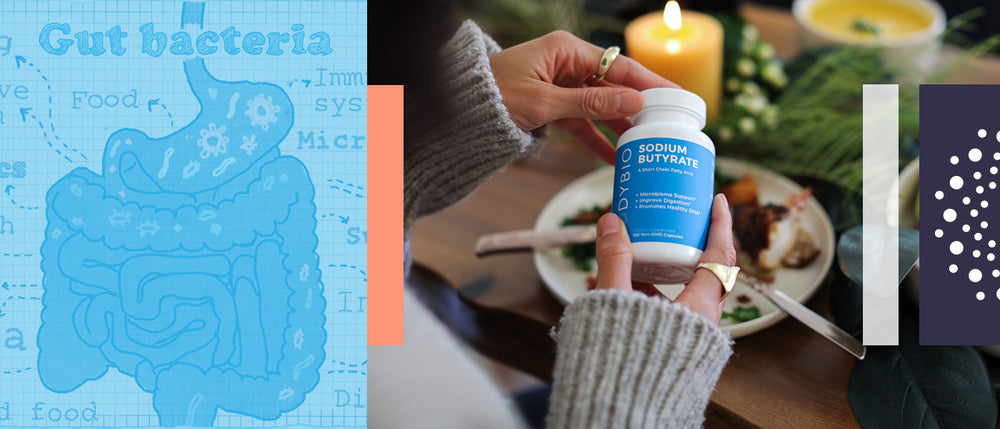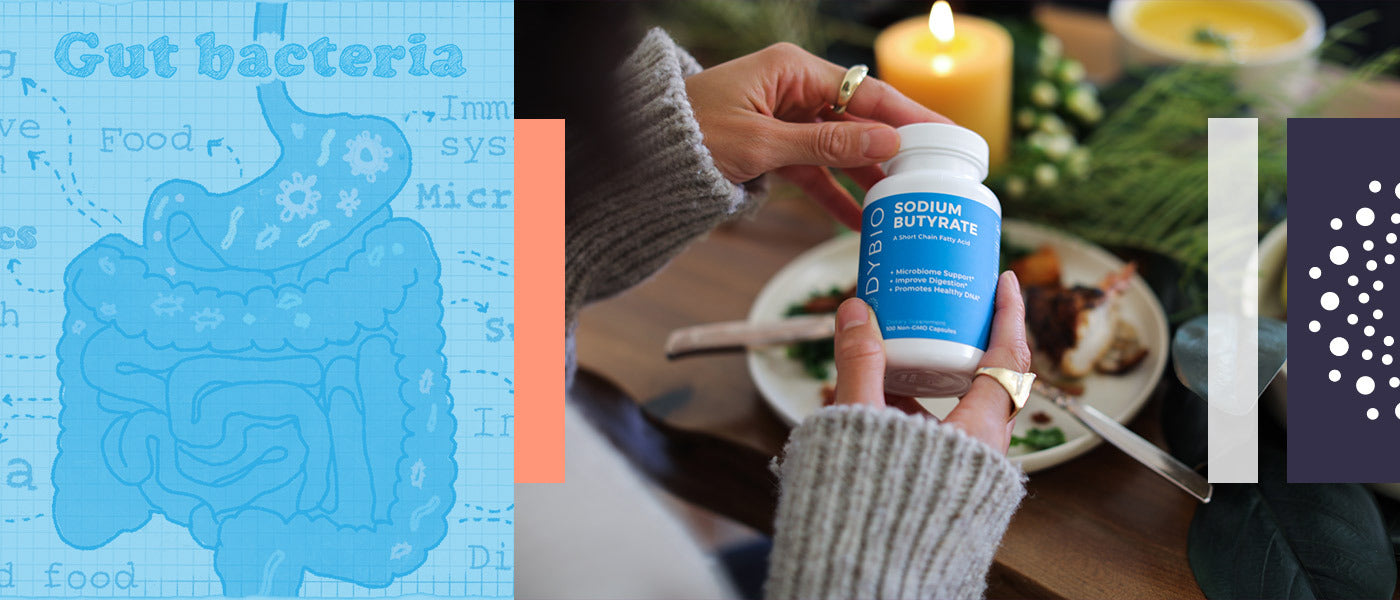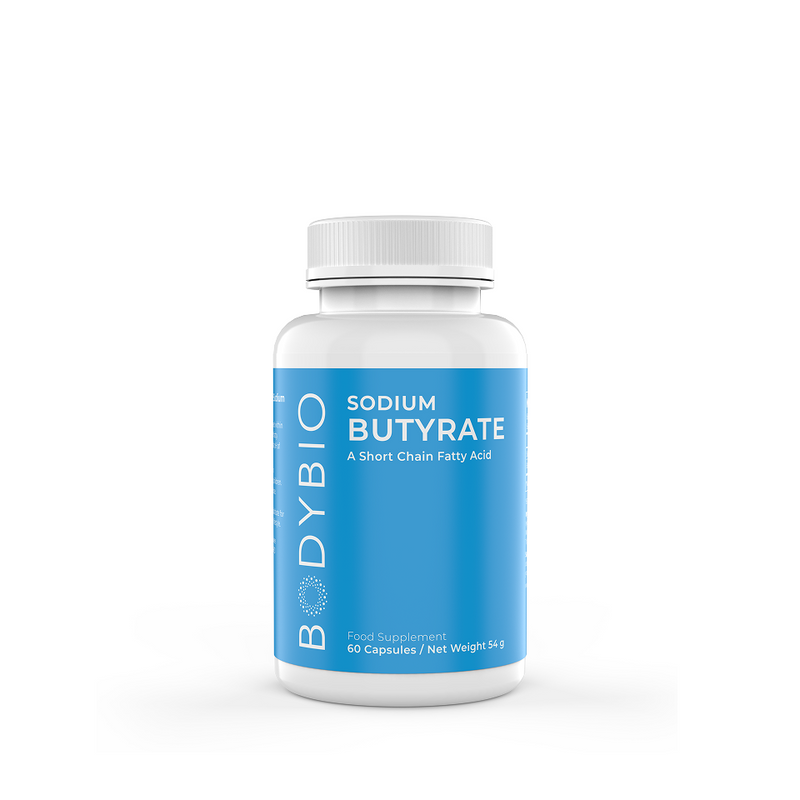Butyrate Foods: Its Role in the Body & Top Foods With Butyrate
Key Takeaways:
Key Points:
- Butyrate is a postbiotic short-chain fatty acid, a beneficial metabolite created by a healthy microbiome to support gut health, especially the gut lining.
- Butyrate can be produced naturally in the gut by a healthy microbiome, but most of us aren’t eating the right kind of fiber (resistant starch) needed for the microbiome to make butyrate.
- Some foods that boost butyrate production include cooked and cooled potatoes, rice, and beans, butter and dairy products, underripe bananas and plantains, and some whole grains.
In the health and wellness community, butyrate has become a household name seemingly overnight as more awareness is surfacing surrounding its benefits for our microbiome.
People who want the health benefits of short-chain fatty acids may be wondering how they can increase butyrate levels in the gut. This can be achieved through supplementation as well as increased intake of specific butyrate-rich foods.
Table of Contents:
What is Butyrate?
Butyrate is a short-chain fatty acid (SCFA) produced by your microbiome within the colon. It is made by the bacterial fermentation of resistant starch in your gut. Optimal levels of butyrate in the gut promote a balanced microbiome, boost gut health and function, encourage a healthy inflammation response, and support genetic expression by protecting DNA.*
See our guide on the basics of butyrate for more information.
Protect the Gut, Protect the Whole Body
Your digestive tract, from your mouth through the stomach, small intestine, large intestine, and all the way to the rectum, is the only place we intake substances from outside the body. Because of this, it is the most susceptible part of the body to inflammation and disease (especially with all of the pollutants and toxins in our modern world).
Accordingly, most of our immune cells and the microbes that regulate those immune responses live in our digestive tract. The microbiome is responsible for creating the right immune cells and cell responses to different threats, maintaining the integrity of the intestinal wall, and producing the right nutrients to maintain homeostasis in the gut.
Butyrate is especially important because it helps to repair the damage that pesticides, toxins, processed foods, drugs, and more have done to the lining of the gut. Research shows that the right levels of butyrate can help to support a healthy gut lining, reinforce the mucosal barrier, and keep you regular, moving those toxins and metabolic waste out of the body.*
Benefits of Butyrate-Rich Foods

Butyrate plays a crucial role in maintaining gut health and offers a range of amazing benefits:
- Promotes gut/microbiome health*
- Reinforces the mucosal barrier and modulates motility*
- Functions as an HDAC inhibitor, meaning that it supports a healthy inflammation response by suppressing the activity of specific cells*
- Supports healthy insulin response and healthy blood sugar regulation*
- Promotes a healthy gut mucosa — butyrate serves to close tight junctions and prevent the modern phenomenon commonly known as leaky gut*
Learn more about the benefits of butyrate here.
How is Butyrate Produced in the Body?
We get butyrate and other short-chain fatty acids from eating foods that are high in resistant starch. Resistant starch is a type of starch that’s quite literally “resistant” to digestion — meaning your body can’t break it down. Instead, butyrate is produced in the colon via the fermentation of these resistant fibers by gut bacteria.
There are four types of resistant starch:
- RS Type 1 is physically inaccessible, bound within the fibrous cell walls of plants. Note that only plants have cell walls surrounding their membranes; animals have only cell membranes. This type of resistant starch is embedded in the coating of seeds, nuts, grains, and legumes.
- RS Type 2 is a starch with a high amylose content that is indigestible in its raw state. Potatoes, unripe bananas, and plantains reside in this group (until they’re cooked).
- RS Type 3 is retrograde, called this because it transforms into resistant starch when cooked and then cooled. This occurs with foods like white potatoes and white rice. If reheated to a temperature lower than 130° F, it maintains its resistant nature and is able to feed colonocytes.
- RS Type 4 does exist, but it’s synthetic and not recommended for human ingestion.
Butyrate-Producing Bacteria
There are a few different types of gut bacteria in the colon that produce butyrate (that we know of so far). The main strains that account for our butyrate production are:
- Faecalibacterium prausnitzii
- Eubacterium rectale/Roseburia spp
The groups of bacteria that these strains belong to (think genus and species) make up between 5 and 10 percent of the total healthy gut bacteria in the stool samples of healthy people.
SCFAs & the Microbiome
Butyrate is both a short-chain fatty acid made by the microbiome, as well as fuel for the gut microbiome, in a sense. When the good bacteria (specifically the Faecalibacterium and Eubacterium strains mentioned above) munch on those resistant starches, they create the butyrate that feeds our gut lining. Therefore, we can refer to butyrate and SCFAs as postbiotics, or a product created by bacteria in the microbiome that nourishes our cells.
A healthy gut lining is free from chronic inflammation and able to easily manage nutrient absorption and electrolyte balance, which equates to a healthier microbiome. Butyrate is a key player in this delicate ecosystem of a healthy microbiome.
Maintaining a Balanced Diet for Gut Microbiome Health
The old school of thought was focusing on supporting our body with our diet — the micro and macronutrients we need to run our cells. This is still the case, but now we know that we should always be thinking about supporting our microbiome as well when it comes to our dietary choices.
We know now that we share our bodies with the billions of bacteria, fungi, and even viruses and their health is just as crucial to our well-being as the health of our cells. They are important messengers and endogenous creators of compounds like butyrate that support our bodily processes.
In many cases, dietary fiber is what feeds the microbiome, what you might have heard referred to as prebiotics. Prebiotic dietary fiber is what feeds our probiotics, which then create postbiotics, like butyrate.
Best Butyrate-Rich Foods

There are certain foods you can add or increase in your diet that either contain butyrate already or help the microbiome produce more butyrate in your gut.
Butter & Dairy
Butter and dairy products are not a direct source of butyrate. However, they can be helpful for increasing butyrate levels in the body because they contain probiotic bacteria like Lactobacillus and Bifidobacterium, which are beneficial for gut health. These can help maintain a balanced gut microbiome, which is crucial for the growth and activity of butyrate-producing bacteria.
- Butter
- Cheese
- Milk (cow, goat, or sheep)
- Ghee
As tasty as it is, overindulging on dairy and butter is not recommended — but it can be part of a balanced diet to support your gut health!
Cold Rolled Oats
For additional resistant starch in your regimen, try overnight cold rolled oats. Cold-rolled oats, like other types of oats, contain some dietary fiber (particularly beta-glucans) which can contribute to the production of butyrate in the gut. Here’s an easy way to make them at home:
- Put the oats into a mason jar or other suitable glass container and cover them with non-dairy milk (but not soy) or plain water.
- Refrigerate overnight.
- Add berries and/or cinnamon, if you like.
This cold recipe will give you eight grams of resistant starch while cooked oatmeal eaten hot offers about half a gram of RS.
Legumes
Butyrate is produced during the fermentation of undigested dietary fibers like galacto-oligosaccharides (GOS) found in legumes. As with many foods in this category, their butyrate levels increase when cooled after cooking. These include:
- Beans
- Peas
- Lentils
If you’re starting to add more legumes to your diet, remember to go slow and notice how your body responds. Due to their complex carbohydrate and fiber content, legumes can be challenging for some digestive systems. Even starting with a spoonful or two a day at first is a good introduction. Interestingly, beans are the only food that all “blue zone” diets have in common, making them a dramatically undervalued superfood.
Cooled Potatoes
Eating cooked and cooled potatoes can increase butyrate levels in the gut due to the formation of resistant starches during the cooling process. When potatoes are cooked and then allowed to cool, the starches in them undergo a phenomenon called retrogradation which transforms into a more resistant form, bolstering butyrate production.
Cooled Rice
Similar to potatoes, when rice is cooked and then cooled, it undergoes retrogradation and the starches become more resistant. By consuming these resistant starches, you can support the growth of butyrate-producing bacteria, ultimately leading to increased production in the gut.
Underripe Bananas & Plantain Flour
When choosing bananas, go for the green for more butyrate production. They may taste less sweet but they are higher in resistant starch. Plantains are more resistant to digestion as well, so trying plantain flour in your baked goods may help increase butyrate levels further.
Whole Grains & Prebiotic Fibers
You can also get resistant starch from whole grains, fibrous vegetables, and other cellulose sources:
- Brown rice
- Whole wheat
- Barley
- Asparagus
- Broccoli stems
- Leafy greens (kale, Brussels sprouts, etc.)
- Apple/pear peels
As always with any new food you incorporate into your diet, it’s important to observe your body carefully and notice how your digestion reacts. Remember, fiber-rich foods can be challenging for some digestive systems if introduced too quickly.
Is It Possible to Get Enough Butyrate Through Diet Alone?
Unfortunately, all gut microbiomes are not created equal. That means we can’t necessarily make the same butyrate levels as our friends. Trying to get 25 grams of fiber a day is a noble venture, but one that seems elusive to even the best intentions. Fortunately, you can increase your butyrate production with butyrate supplements.
Butyrate Can Make a Difference in Your Health
Butyrate is a therapeutic postbiotic that is growing in popularity for its incredible impact on digestive health — reducing bloating, speeding up transit time, lowering inflammation, and more incredible systemic effects.* If you’re dealing with digestive symptoms or disease, you can increase your butyrate levels through a combination of diet and supplementation.
At BodyBio, our supplements have been trusted by practitioners for decades — and best of all, they’ve helped so many people remember what life was like before gut symptoms. If you’ve tried everything to support your gut, without any results, then we have the perfect butyrate supplement for you! Check out our Butyrate Gut Health Supplements or learn more with our Butyrate/Gut+ Get Started Guide!
Bourassa, Megan. "Butyrate, Neuroepigenetics and the Gut Microbiome: Can a High Fiber Diet Improve Brain Health? - PubMed." PubMed, 1 Jan. 2016, https://pubmed.ncbi.nlm.nih.gov/26868600/
Parolini, Cinzia. "Effects of Fish N-3 PUFAs on Intestinal Microbiota and Immune System - PubMed." PubMed, 1 Jan. 2019, https://pubmed.ncbi.nlm.nih.gov/31234533/
Brouns, F., Kettlitz, B., & Arrigoni, E. (2002). Resistant starch and “the butyrate revolution.” Trends in Food Science and Technology, 13(8), 251–261, https://doi.org/10.1016/s0924-2244(02)00131-0
Patterson, Mindy. "Resistant Starch Content in Foods Commonly Consumed in the United States: A Narrative Review - PubMed." PubMed, 1 Feb. 2020, https://pubmed.ncbi.nlm.nih.gov/32040399/
Velázquez, O. "Butyrate and the Colonocyte. Production, Absorption, Metabolism, and Therapeutic Implications - PubMed." PubMed, 1 Jan. 1997, https://pubmed.ncbi.nlm.nih.gov/9361838/









